 |
 |
 |
| |
PER ACT HIV TRANSMISSION RISK THROUGH ANAL
INTERCOURSE: AN UPDATED SYSTEMATIC REVIEW AND META-ANALYSIS1
|
| |
| |
Reported by Jules Levin
HIV Research for Prevention (HIVR4P), October 21-25, 2018, Madrid
Download the PDF
Rebecca F Baggaley1, Branwen N Owen2, Romain Silhol2, Jocelyn Elmes1,2, Peter Anton3, Ian McGowan4, Ariane van der Straten5, Que Dang6, Edith M Swann6, Barbara Shacklett7, Marie-Claude Boily2 1London School of Hygiene and Tropical Medicine, United Kingdom, 2Imperial College London, United Kingdom, 3UCLA Center for HIV Prevention Research, UCLA AIDS Institute, David Geffen School of Medicine at UCLA, United States, 4University of Pittsburgh, United States, 5RTI International, United States, 6National Institutes of Health, United States, 7University of California Davis, United States
Background: Quantifying HIV transmission risk per act of anal intercourse (AI) is important for HIV prevention, including new HIV prevention technologies. We updated previous reviews (of studies published pre-02/2012) of HIV transmission risk through AI.
Methods: We searched Medline and Embase to 02/2018 for new studies reporting HIV transmission risk per AI sex act. We pooled study estimates (following arcsin-transformation) of per act risk through receptive AI (URAI) and insertive AI (UIAI) both unprotected by condoms. We conducted subgroup analyses by study design and population (heterosexual, men who have sex with men (MSM)) and plausible levels of antiretroviral therapy (ART) use.
Results: We reviewed 5336 titles. Two new studies were identified, from which one new independent study was included. All included studies were from high income countries.
The revised pooled estimate of per act URAI HIV risk was 1.25% (95%CI 0.55-2.23,N=5,I2=87%) and UIAI risk was 0.17% (95%CI 0.09-0.26,N=3,I2=0%).
Pooled per act URAI risk did not differ by ART use.
The sole heterosexual URAI estimate (3.38%,95%CI 1.85-4.91) was significantly higher than the MSM pooled URAI estimate (0.75%,95%CI 0.56-0.98,N=4,p< 0.0001).
Pooled per act URAI risk from retrospective-partner studies (2.56%,95%CI 1.20-4.42,N=2 (one MSM, one heterosexual)) was significantly higher than from prospective studies of individuals (0.71,95%CI 0.51-0.93,N=3 (all MSM), p< 0.0001).
Only study design was independently associated with URAI transmission risk estimate (p=0.055).
Conclusions: HIV is at least 10-fold more transmissible through anal than vaginal sex in high income settings. Transmissibility appears to have remained high despite ART use having increased in the HIV-infected population.
Prevention messages should emphasise this high risk. Better studies are required to evaluate how AI transmissibility differs between heterosexual and MSM populations, high and low income countries and following ART scale-up at the population level.
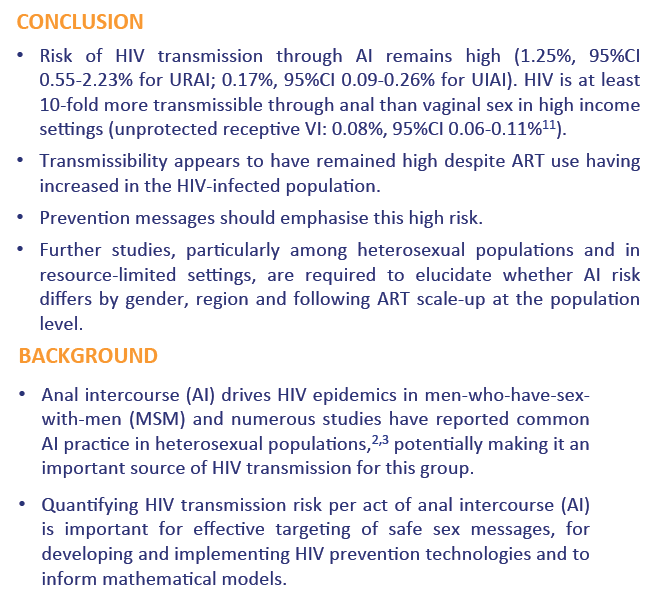
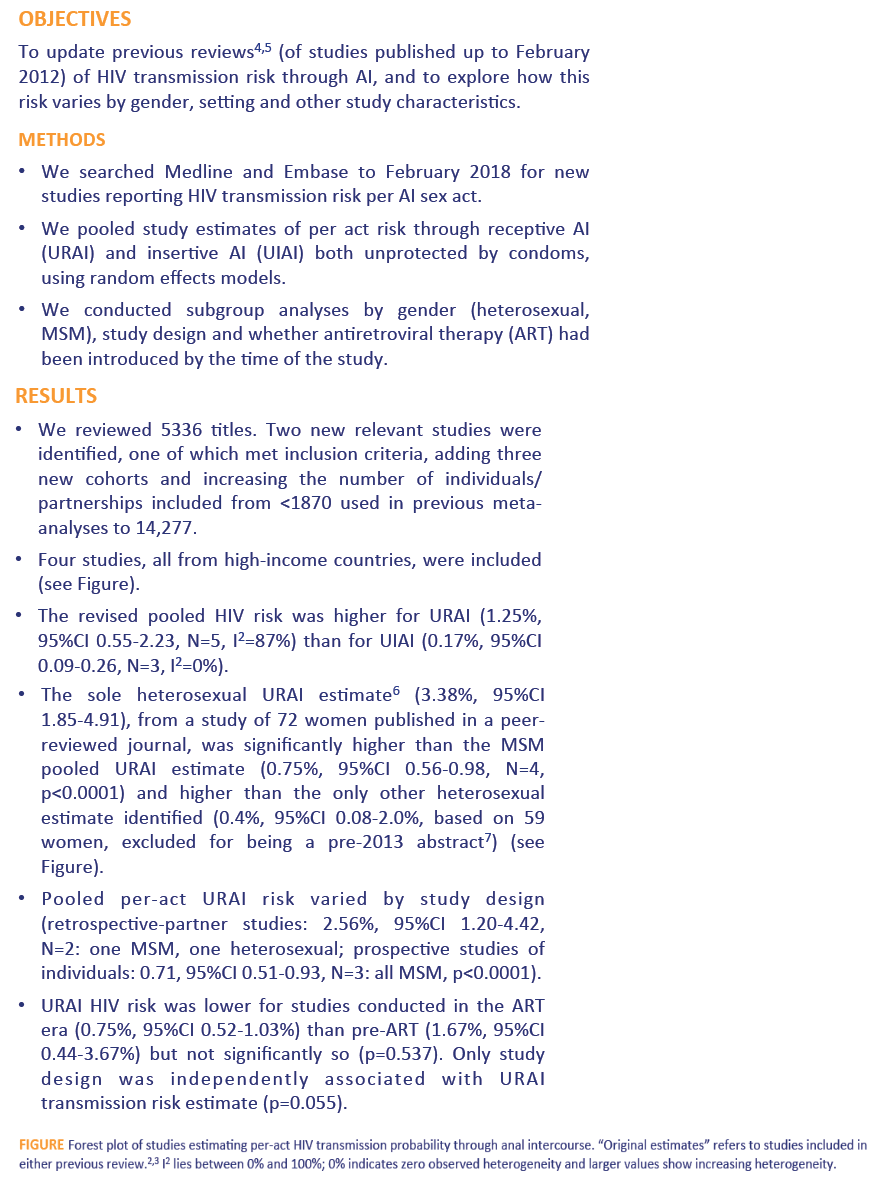
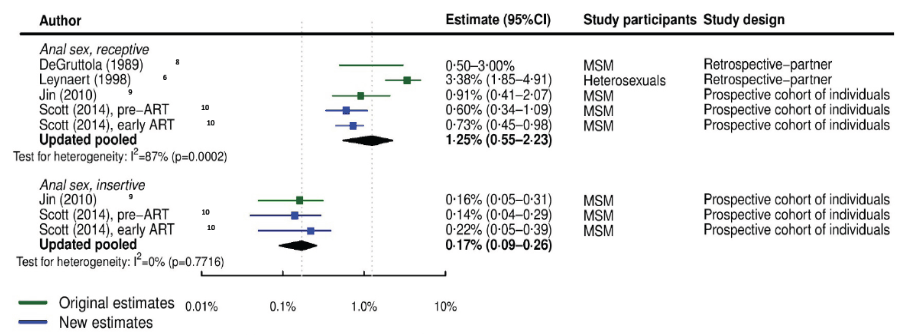
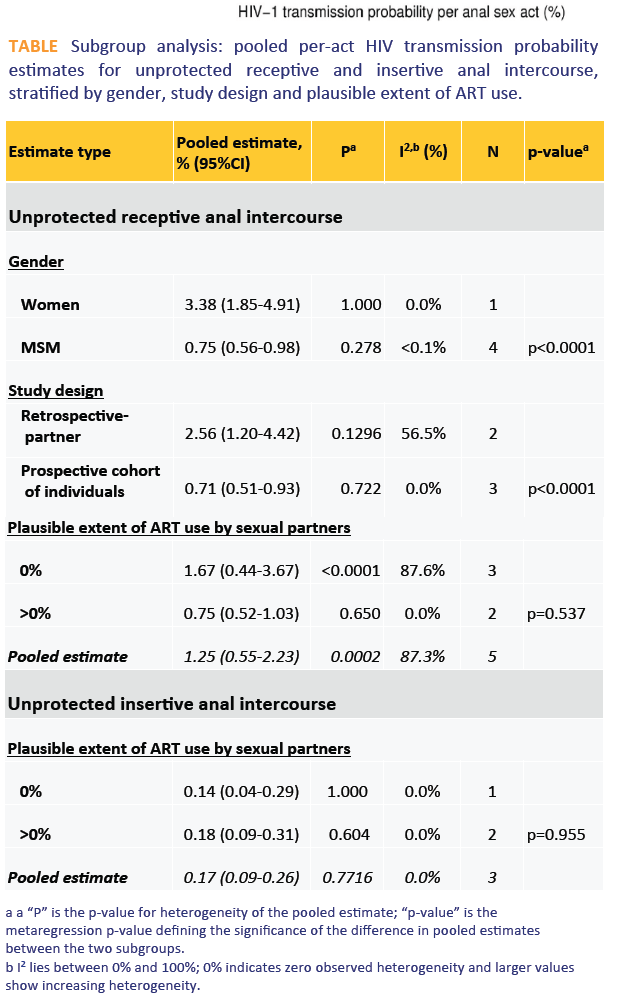
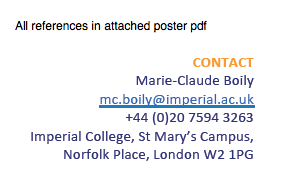
|
| |
|
 |
 |
|
|